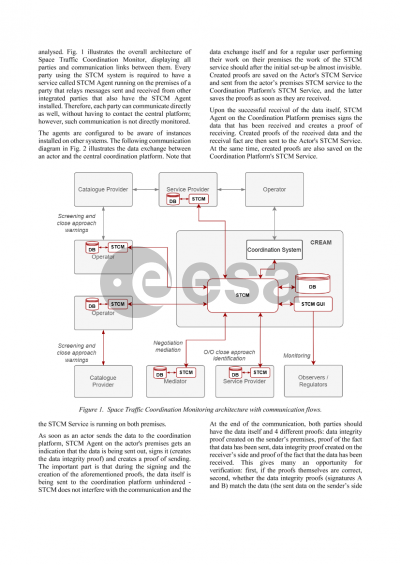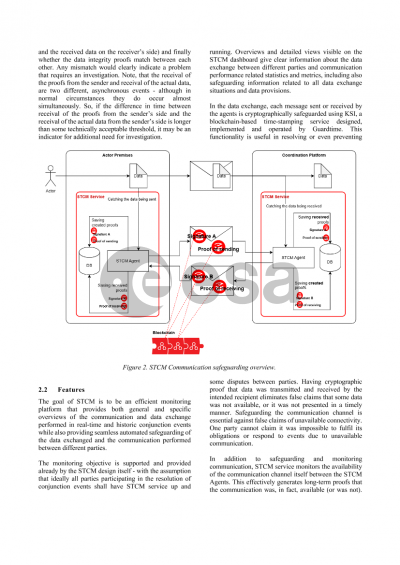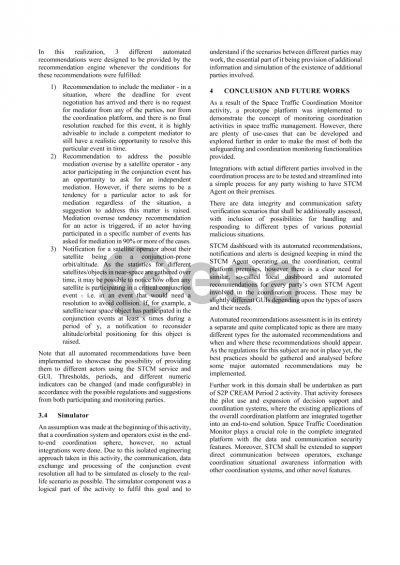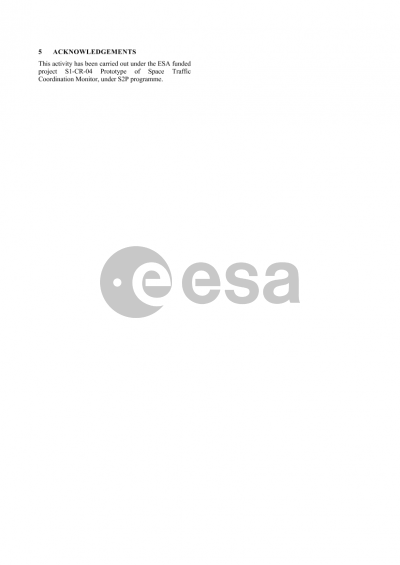Document details
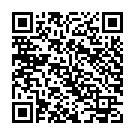
Abstract
Coordination of collision avoidance, negotiation and agreement is a resource-intensive, time-consuming and a complex process involving several entities. Conjunction coordination between operators is not a standardised process, therefore, requiring any means necessary to cooperate effectively. Collision Risk Estimation and Automated Mitigation (CREAM), a complex system of systems, aims at connecting different actors, including operators, collision avoidance service providers, space catalogue owners and others, into a single network where communication between the actors is simplified, standardised, and coordination of conjunctions are automated. One such system is the Space Traffic Coordination Monitor (STCM), which monitors and manages space traffic coordination systems exchanging data related to collision avoidance in a collision avoidance process between the involved entities in a secure and trusted way. The security entails data immutability and integrity assurance of the transmitted data. In the critical process of satellite coordination, in case of a conjunction, it is of utmost importance to trust and rely on the exchanged data files. Data exchange needs to comply with needs of the various actors, e.g. in terms of limiting data visibility to restricted collection of other entities, as well as ensure that data is unaltered during the communication process and sending and the reception of messages is logged in a verifiable way. Moreover, a standardised interface for data exchange between parties is provided.
Due to the increasing congestion in space, rules and regulations are needed now more than ever. Steps have been taken towards a regulated traffic management; however, no legislation has yet come to life. STCM aims to support STM authorities and regulators in providing global status overview of space traffic coordination and allowing conformity monitoring of Space Traffic Management regulations. Therefore, the use of STCM in supporting regulatory processes in space traffic management was investigated.
The main functionalities of the STCM platform cover use cases related to overseeing the efficiency and effectiveness of the coordination process; responsiveness, timeliness and operational activity of the parties involved in conjunction events; detect conflicts or issues in the communication framework; and functioning and outcomes of the safeguarding process.
Safeguarding showcases the possibility of making the whole coordination process more secure and transparent, making explicit the actions taken or not taken by the actors participating in the event-related data exchange. In addition, safeguarding shows more difficult situations, dealing with uncertainty, where there might be a possibility of a malicious activity, man-in-the-middle attacks or even malfunctioning of the safeguarding service itself.
Different aspects of the coordination process are considered, e.g. short- and long-time coordination, immediate involvement of the mediator, multiple different resolutions to the conjunction event, etc.
The possibility to make regular improvements to the coordination process, and even to the regulations for the latter, were analysed and realised as a working concept. These improvements and suggestions are presented in the form of automated recommendations.
The automated recommendations serve many different purposes – from regular suggestions to include a mediator to support the negotiation process and come to a successful resolution; to suggestions for satellite operators on choosing a less congested operational altitude; to recommendations for regulators to adjust the rules/regulations themselves for a more efficient coordination process.
Preview

